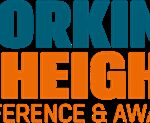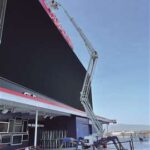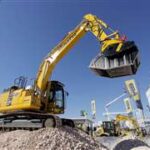Understanding Boom Lifts: Types and Uses
Boom lifts are essential equipment for heavy machinery operators. With several models available, selecting the right one can be overwhelming. In this guide, we’ll explain what boom lifts are, their uses, and the various types to consider for specific tasks.
What is a Boom Lift?
Boom lifts are vehicles that elevate workers, tools, and supplies to various heights. The two primary types are:
- Telescopic Boom Lifts (Straight Boom): These feature a single extendable arm and are great for open areas and various terrains.
- Articulating Boom Lifts (Knuckle Boom): These have segmented arms, allowing them to maneuver around obstacles and work in confined spaces, such as crowded city areas.
Boom lifts are powered by diesel, gas, electric, or hybrid engines, and can be equipped with two- or four-wheel drive. They come in various sizes, from compact 30-foot models to towering 180-foot lifts that reach up to 19 stories.
Main Types of Boom Lifts
-
Articulating Boom Lifts
Also known as “knuckle” booms, these lifts use a bucket at the end of an articulating arm. They offer both vertical and horizontal flexibility, reaching up to 125 feet vertically and up to 75% of their height horizontally. Available in indoor (electric) and outdoor (diesel) models, these lifts can be customized with attachments like cranes or forklifts. -
Telescopic Boom Lifts
These lifts are designed for maximum vertical reach. With arms that extend straight out and then move vertically, they are ideal for working at tall buildings or elevated sites. The largest telescopic boom lifts can reach up to 185 feet. They are easier to operate than articulating lifts, thanks to their single boom structure. -
Atrium Lifts
Atrium lifts are unique as they use tracks instead of wheels, making them ideal for uneven terrain. These lifts are lighter and narrower, allowing access to tight spaces. They can extend up to 60 feet and are suitable for both indoor and outdoor use. Atrium lifts are commonly used for maintenance in buildings with narrow passageways.
Choosing the Right Boom Lift
When selecting a boom lift, consider factors such as indoor or outdoor job sites, terrain, and mobility needs. The number of workers and equipment required should also be factored in, as well as the lift’s weight capacity and the surface it will operate on.
Operating a Boom Lift
Before operating, inspect the lift and ensure all components are functional. Turn on the platform control, activate the kill switch, and secure yourself with the safety harness. Start the engine, raise the lift slowly using the joystick, and make sure to control the speed with the lift’s settings.
Boom Lift Uses
Boom lifts are used for a variety of tasks, from construction and maintenance to cleaning and window washing. Their ability to reach great heights and navigate tight spaces makes them indispensable on many job sites.
Boom Lift Certification
Operators must be certified to use boom lifts. OSHA mandates certification for safety, and untrained operators could face fines and risks of accidents. Proper training ensures compliance with safety regulations and prevents costly penalties.
Why Certification is Important
Employers must ensure all operators are certified. Failing to do so exposes the company to hefty fines. Certifying operators not only complies with OSHA regulations but also ensures safer work environments, reducing the risk of injuries.




